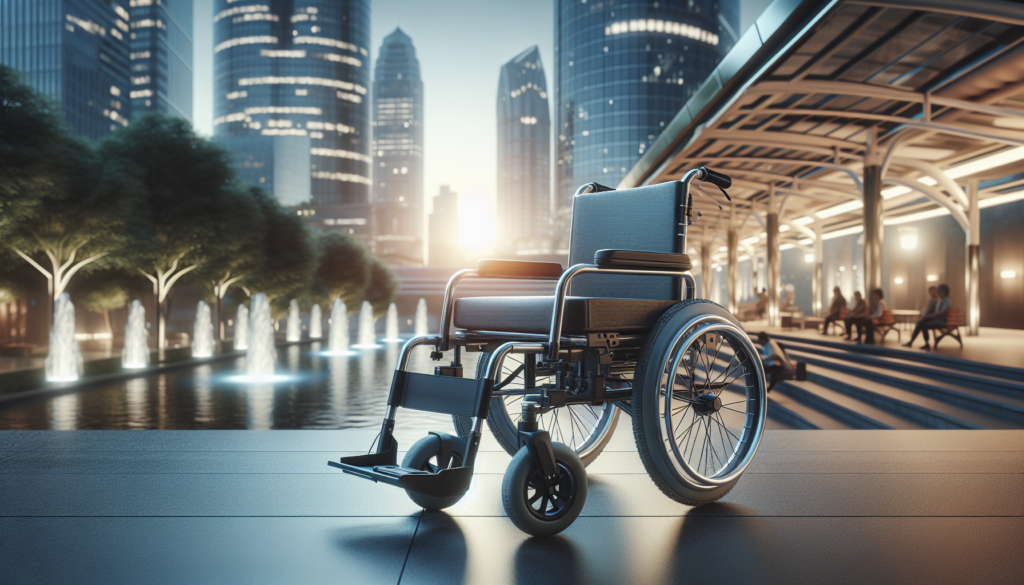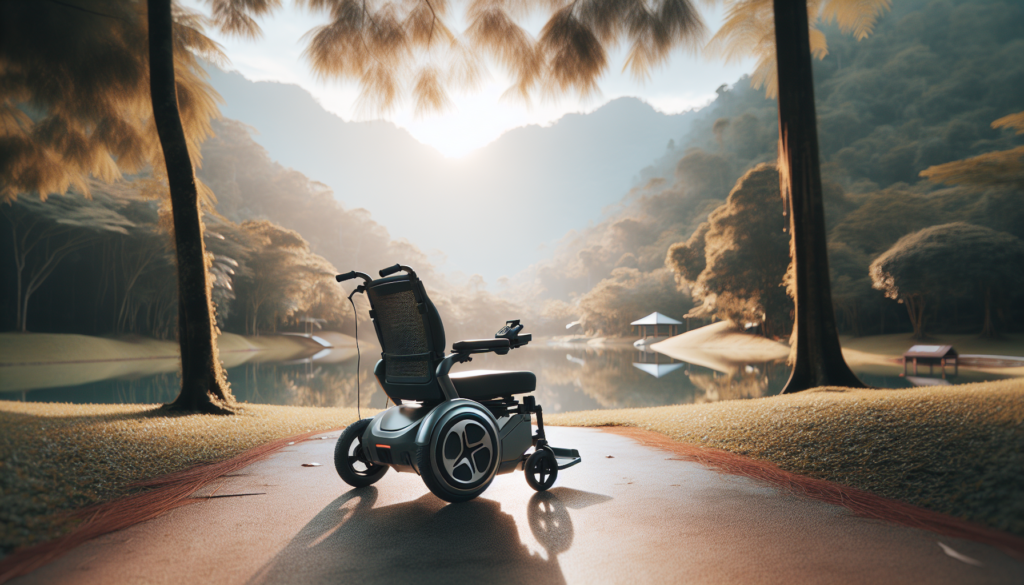
When it comes to choosing the right battery for an electric wheelchair, understanding the differences between lithium-ion and lead-acid batteries is crucial. Both battery types offer distinct advantages and disadvantages that can greatly affect the performance, weight, and overall user experience of the wheelchair. For instance, lithium-ion batteries, like those found in the Edegree EW6, provide a longer range per charge and are generally lighter, making them ideal for users seeking mobility and efficiency.
In contrast, lead-acid batteries, as seen in the Edegree EW1, are often more affordable but come with increased weight and shorter range. As we delve into this battery showdown, we will explore how these differences impact the functionality and usability of electric wheelchairs, guiding you to make an informed choice for your mobility needs.
Understanding Electric Wheelchair Batteries
When it comes to electric wheelchairs, the choice of battery plays a critical role in their performance and efficiency. Lithium-ion batteries, like the one used in the Edegree EW6, offer a range per charge of approximately 10-15 kilometers and a lightweight design at just 14.8 kg. This battery type not only boasts a faster charging time of 6-8 hours but also allows for greater mobility due to its ability to power a dual motor more efficiently.
With a maximum load capacity of 100kg and an impressive climbing ability of less than 10 degrees, the Edegree EW6 demonstrates how lithium technology enhances power and usability in electric wheelchairs. The brushless motor at a rated capacity of 24v190w further emphasizes modern advancements in design and performance.
On the other hand, the Edegree EW1 utilizes a lead-acid battery, which, while being more affordable at a price point of RM 2,499, has a shorter range per charge of up to 20 kilometers but comes with a heavier weight of 38 kg. This battery type requires a 6-hour charging time and may not provide the same performance level as its lithium counterpart. It supports a dual motor with a slightly higher output (24v250w), which compensates for its weight and makes it suitable for users who do not require frequent long-distance travel. Understanding these differences between lithium-ion and lead-acid batteries is essential for users to make informed choices for their electric wheelchairs.
Key Differences: Lithium-Ion vs. Lead-Acid Batteries
When considering electric wheelchairs, one of the most critical factors is the type of battery used, with lithium-ion and lead-acid batteries being the two prominent options. Lithium-ion batteries, like the ones found in the Edegree EW6, offer a range per charge of 10-15 km with a lightweight build of just 14.8 kg, making them ideal for portability. They also charge relatively quickly (6-8 hours) and support a maximum load of 100 kg, while maintaining higher efficiency over time due to their advanced technology.
This results in faster forward and reverse speeds of up to 8 km/h and less frequent replacement, providing users with better durability and longer usage life. In contrast, lead-acid batteries, exemplified by the Edegree EW1, weigh significantly more at 38 kg and provide a longer range per charge (20 km). However, they are slower, with speeds capped at 6 km/h, and require more frequent maintenance due to their less efficient nature. Additionally, their 6-hour charging time is on par with lithium-ion but offers less performance capability overall.
Another notable difference between these two battery types is their climbing ability and speed settings. The Edegree EW1, equipped with a lead-acid battery, can handle slopes up to 13° while the EW6, with its lithium battery, is limited to under 10° degrees. Both models feature a 5-speed gear system, yet the added weight of the lead-acid battery may affect maneuverability. Choosing between lithium-ion and lead-acid batteries ultimately depends on individual needs—whether the priority is maintaining lightweight portability or enjoying a more extended range at a lower cost. It’s essential to assess these differences carefully when selecting an electric wheelchair for optimal performance and satisfaction.
Charging Efficiency and Time: What to Expect
When it comes to charging efficiency and time, lithium-ion batteries, like those used in the Edegree EW6 electric wheelchair, have a distinct advantage over traditional lead-acid batteries. The Edegree EW6 features a lithium battery that takes approximately 6 to 8 hours to fully charge, allowing users to quickly get back on the move after a brief charging session. This efficient charging capability is complemented by a notable range of 10-15 km per charge, providing sufficient power for daily activities without the extended downtime associated with other battery types.
In contrast, the Edegree EW1 incorporates a lead-acid battery that requires around 6 hours for a full charge yet manages a slightly higher operational range of 20 km. However, lead-acid batteries can be less efficient in comparison, especially in terms of longevity and overall discharge rates. Another critical aspect to consider is the weight and portability associated with these battery types. The Edegree EW6’s lithium-ion battery contributes to a lighter overall weight of 14.8 kg, making it easier to handle and transport.
Meanwhile, the Edegree EW1’s lead-acid battery results in a heftier total weight of 38 kg, which may pose challenges for some users, particularly those requiring mobility assistance. Overall, while both battery types serve well for electric wheelchairs, lithium-ion batteries stand out in terms of charging efficiency and user convenience, significantly enhancing the riding experience for individuals who rely on these mobility devices.
Weight Considerations and Mobility

When it comes to choosing an electric wheelchair, one of the significant factors to consider is the weight of the battery type. Lithium-ion batteries, like the one used in the Edegree EW6, weigh only 14.8kg, making the overall wheelchair much lighter and easier to maneuver. This reduced weight allows for better portability and simpler transportation, especially for users who need to lift or transfer their wheelchairs frequently. Additionally, lithium batteries generally provide a longer range per charge, enabling users to travel further without the need for frequent recharging, enhancing their mobility and independence in daily activities.
On the other hand, lead-acid batteries are typically heavier, as seen in the Edegree EW1, which weighs a hefty 38kg. This added weight can hinder mobility for some users, making it more difficult to manage the wheelchair effectively. While lead-acid batteries may offer a lower upfront cost, the trade-off in weight and performance is notable. The added bulk may not only restrict the user’s ability to lift and transport the electric wheelchair but may also lead to fatigue over prolonged use. Therefore, when considering weight and mobility in electric wheelchair options, lithium-ion batteries clearly take the lead.
Battery Lifespan and Reliability
When considering the battery options for electric wheelchairs, the lifespan and reliability of lithium-ion and lead-acid batteries come into play significantly. Lithium-ion batteries, like those found in the Edegree EW6, typically offer a longer lifespan, with many lasting between 2 to 5 years depending on usage and care. They are also known for their reliability, providing consistent power output and charging efficiency under various conditions. For example, the Edegree EW6’s lithium battery has a charging time of 6 to 8 hours and can cover a distance of 10-15 km on a single charge, making it an ideal choice for daily use without frequent downtimes.
In contrast, lead-acid batteries, such as those used in the Edegree EW1, generally have a shorter lifespan, typically lasting from 1 to 3 years, depending on maintenance and use. They tend to be bulkier and heavier, as seen in the Edegree EW1 weighing 38kg, which can impact the overall maneuverability of the electric wheelchair. These batteries also require more careful charging practices to ensure they last longer; they require a full 6 hours to charge, yielding a range of 20 km.
Cost Analysis: Is It Worth the Investment?
When considering electric wheelchairs, the type of battery used is a critical factor that influences both cost and performance. Lithium-ion batteries, like the one found in the Edegree EW6, may initially appear more expensive with a price point of RM 4,388. However, their advantages, including a lighter weight of 14.8 kg and a longer range per charge of 10-15 km, often justify the investment.
These batteries also require less frequent charging—taking between 6 to 8 hours compared to the 6 hours needed for the Edegree EW1’s lead-acid battery, and they typically offer better overall longevity. The investment in a lithium-ion battery translates to improved mobility and ease of use with minimal maintenance, making it a sound choice for users who prioritize efficiency and convenience in their electric wheelchairs.
On the other hand, lead-acid batteries, such as those in the Edegree EW1 at RM 2,499, present a more budget-friendly option without sacrificing key features. Although they are heavier at 38 kg and provide a slightly lower range per charge of 20 km, they come with a robust dual motor (24v250w) that supports a climbing ability of 13° degrees. They are ideal for users seeking an economical solution without the need for extensive travel. Ultimately, while upfront costs differ between these battery types, evaluating their overall benefits in terms of mobility, charging requirements, and longevity will help potential buyers determine the worth of their investment in an electric wheelchair.
Choosing the Right Battery for Your Electric Wheelchair
Choosing the right battery for your electric wheelchair ultimately boils down to individual needs and preferences. For those who prioritize a lightweight and efficient power source, the lithium-ion battery may be the superior choice, especially if frequent use and portability are top priorities. However, if budget constraints are a significant consideration, lead-acid batteries might be more appealing due to their lower initial cost, as seen with the Edegree EW1 at just RM 2,499. Users need to weigh these factors carefully, considering aspects like battery capacity, charging time, weight, and overall usability. Making an informed choice will ensure that you select the battery that enhances your mobility, comfort, and independence in using your electric wheelchair.
Final Thoughts on Battery Choices for Electric Wheelchairs

In choosing the right battery for your electric wheelchair, the distinct differences between lithium-ion and lead-acid batteries play a crucial role in determining overall performance and user experience. Lithium-ion batteries, like those in the Edegree EW6, offer superior range, faster charging times, and significantly lighter weight, making them a favorable option for users who prioritize mobility and efficiency. On the other hand, lead-acid batteries, as seen in the Edegree EW1, provide a more economical solution with decent climbing abilities, although they tend to be heavier and may require more maintenance over time.
Ultimately, the best choice depends on individual needs and preferences. For those who value extended travel distance and quicker recharge cycles, investing in a lithium-ion battery could prove worthwhile. Conversely, if budget constraints are a significant factor, a lead-acid battery may offer sufficient performance for daily use. Regardless of the decision, understanding the strengths and weaknesses of each battery type with us at EKO Life MY will empower users to select the most suitable electric wheelchair that aligns with their lifestyle.

As someone who prioritizes being eco-friendly, I’m glad to see the comparison between Lithium-ion and Lead-acid batteries. Perhaps future advancements can lead to even more sustainable options.
Hi Rahul, we appreciate your eco-friendly perspective. At Eko Life Malaysia, we share the same values and are committed to providing sustainable and environmentally-friendly products. We’re glad to hear that you found our comparison between Lithium-ion and Lead-acid batteries informative. We’re always on the lookout for better, more sustainable options and advancements in technology to serve our customers better. If you have any questions or would like to discuss further, please don’t hesitate to contact us at [email protected] or call us at +60 3-7890 3042.
I’ve been using a Lithium-ion battery-powered electric wheelchair, and I can attest to its superior range and faster charging times. I feel more confident navigating hilly areas.
Hi Aloysius Chan, thank you for sharing your wonderful experience with our Lithium-ion battery-powered electric wheelchair! We’re thrilled to hear that you’re enjoying the superior range and faster charging times, especially when navigating hilly areas. Your confidence on the road is what matters to us, and we’re glad our product is helping you achieve that. If you have any questions or need any assistance, please don’t hesitate to reach out to us at [email protected] or call +60 3-7890 3042. Thank you for choosing Eko Life Malaysia!
I completely agree that the best choice depends on individual needs and preferences. For my elderly mother, the reliability and affordability of Lead-acid batteries make it a better option for her daily commutes.
Thank you for sharing your personal experience, Nur Syahirah Abdul. It’s great to hear that Lead-acid batteries are meeting your mother’s needs. At Eko Life Malaysia, we understand the importance of reliability and affordability, especially for elderly individuals. If you have any questions about setting up or maintaining her electric wheelchair with the Lead-acid batteries, please don’t hesitate to reach out to us at [email protected] or +60 3-7890 3042. We’re here to help. Date: 2025-04-19T16:42:17